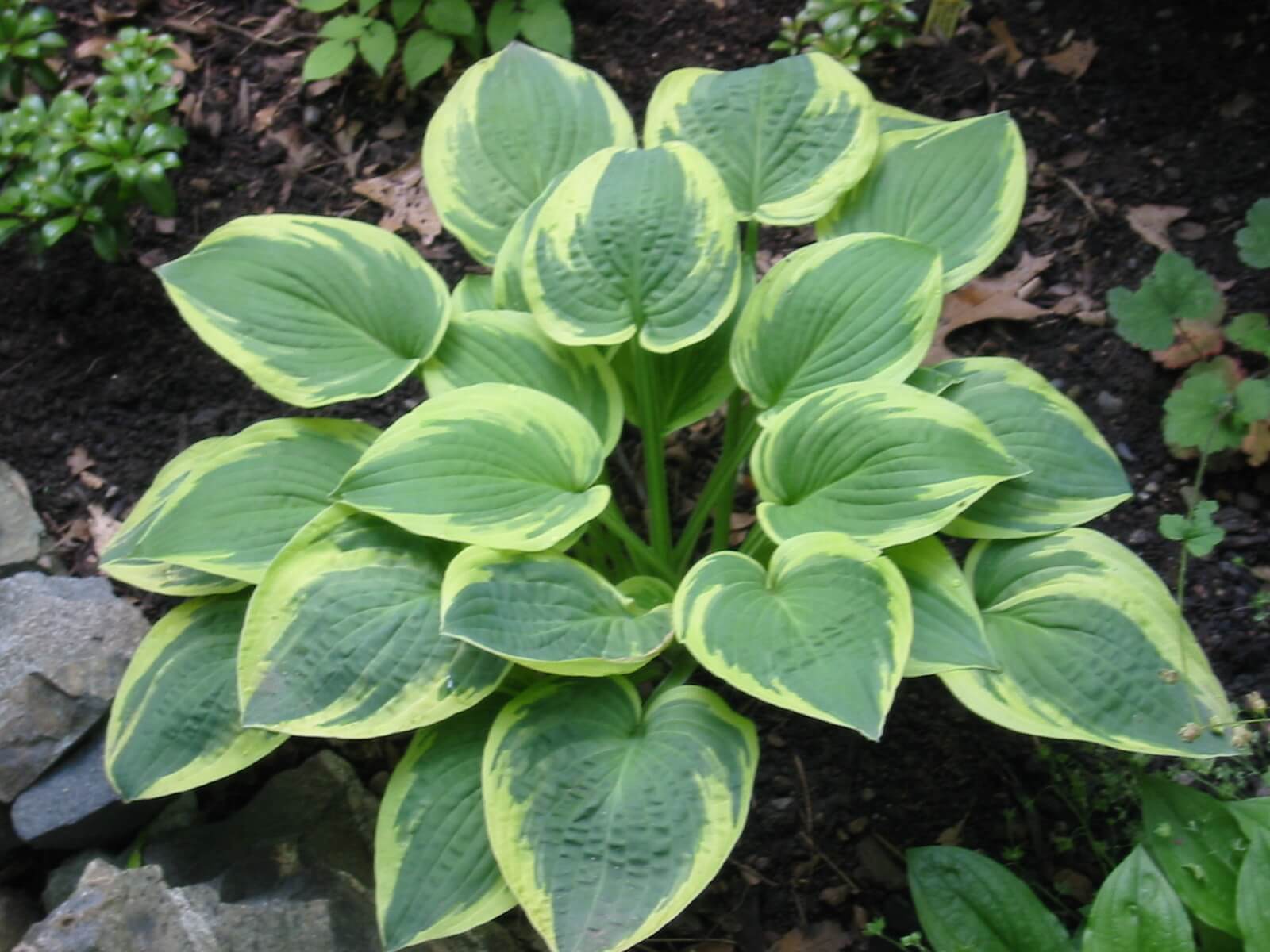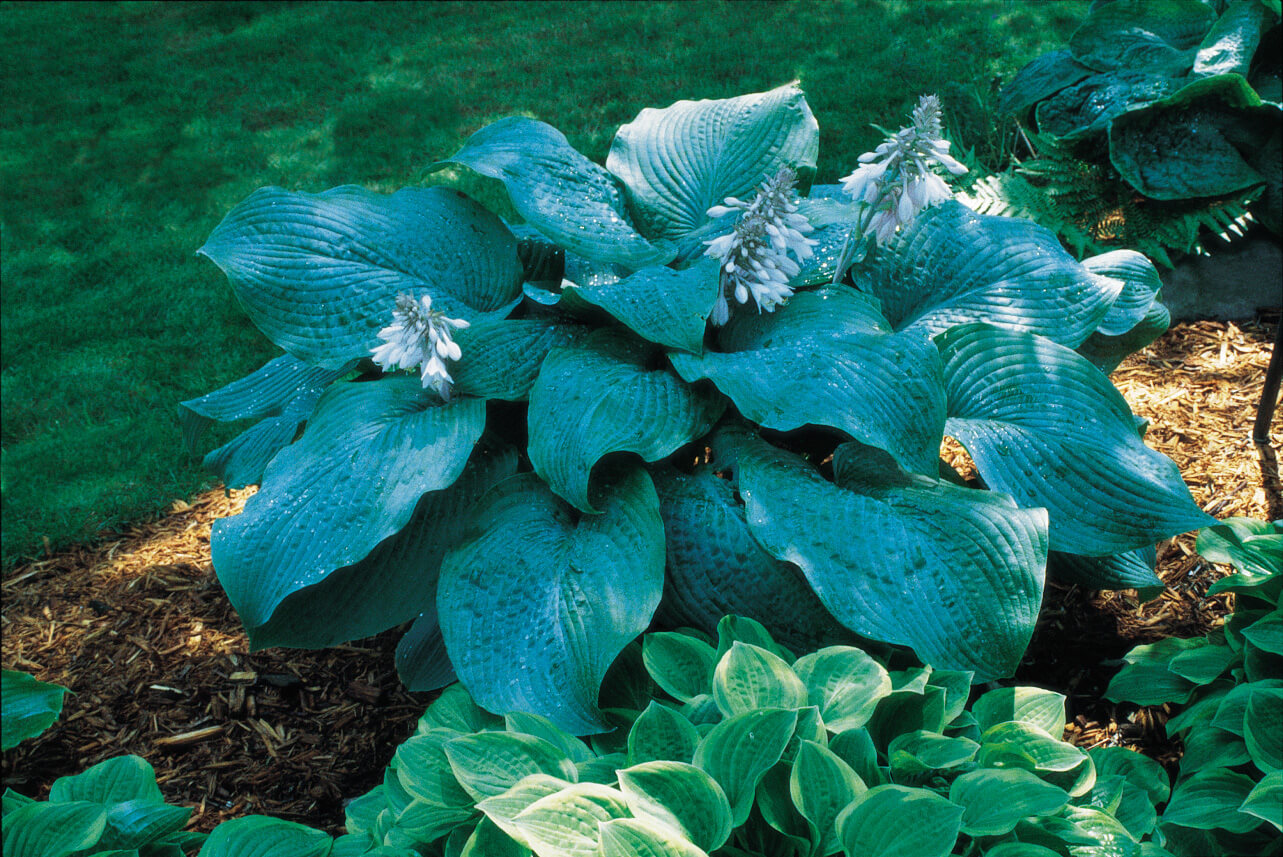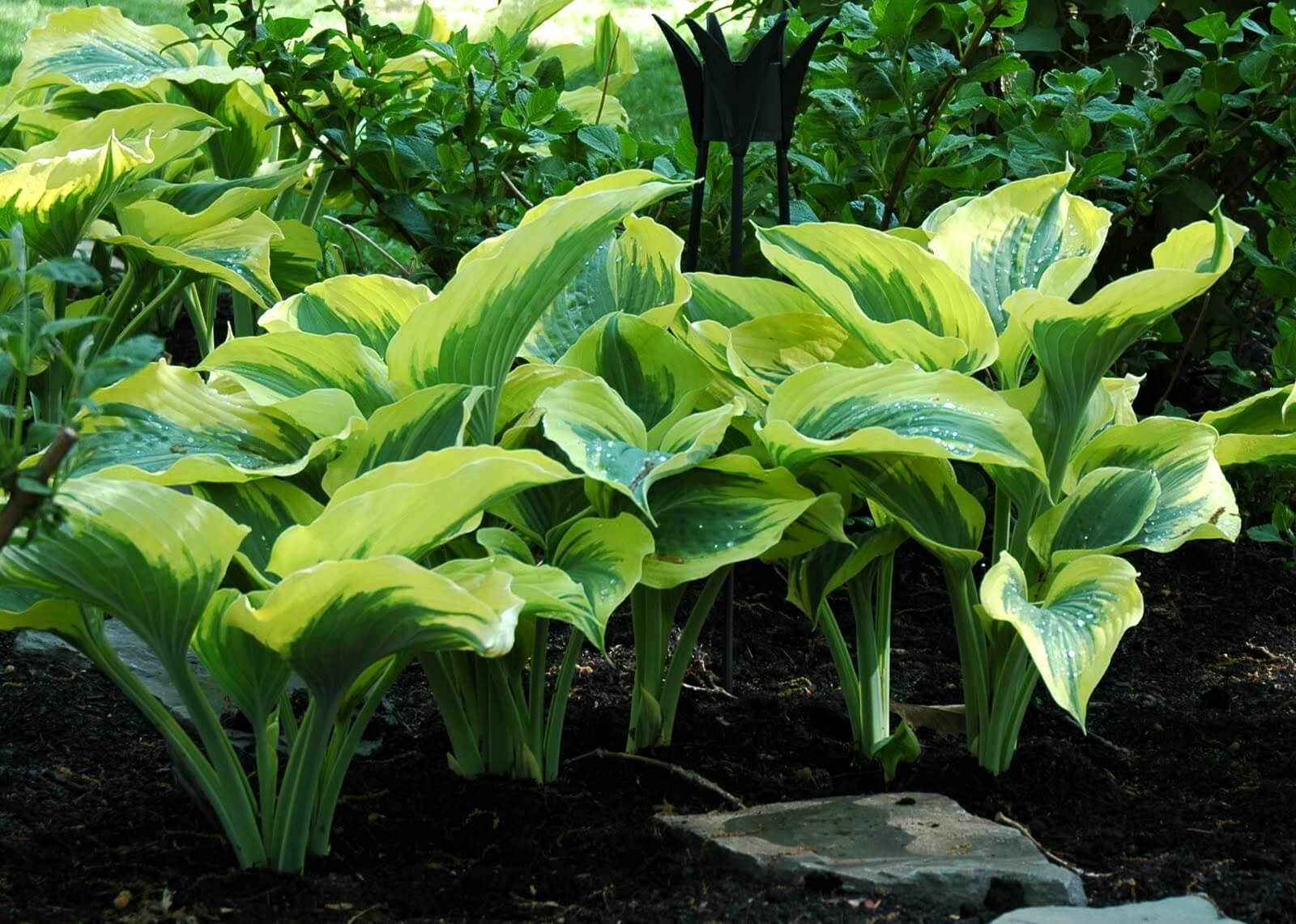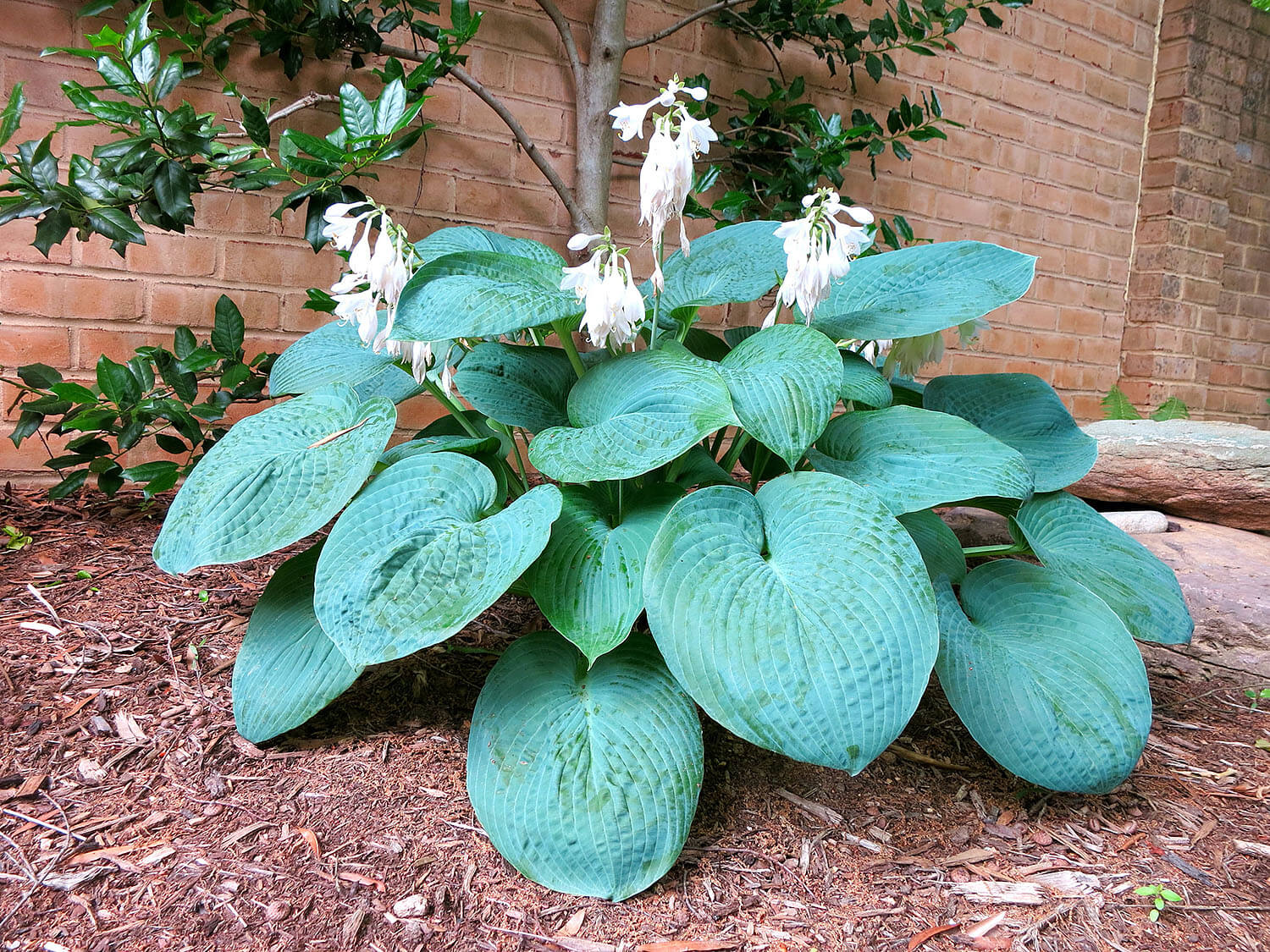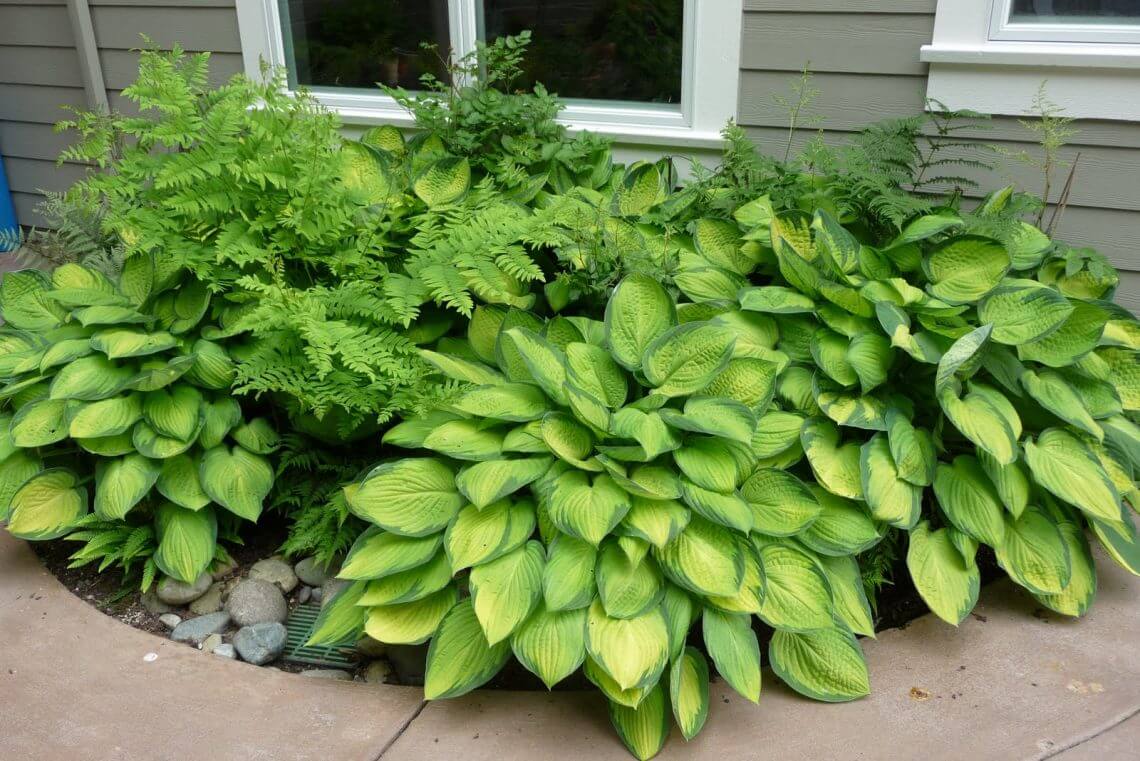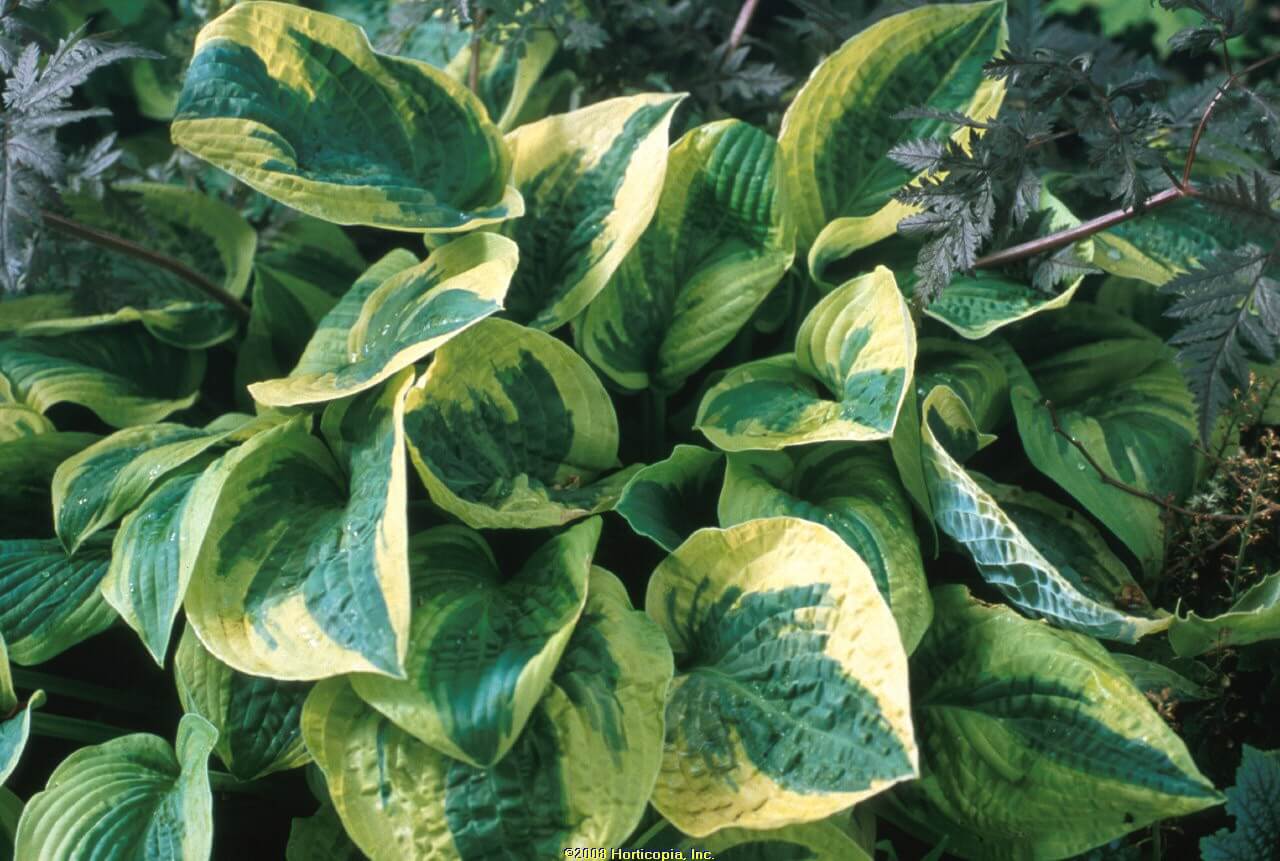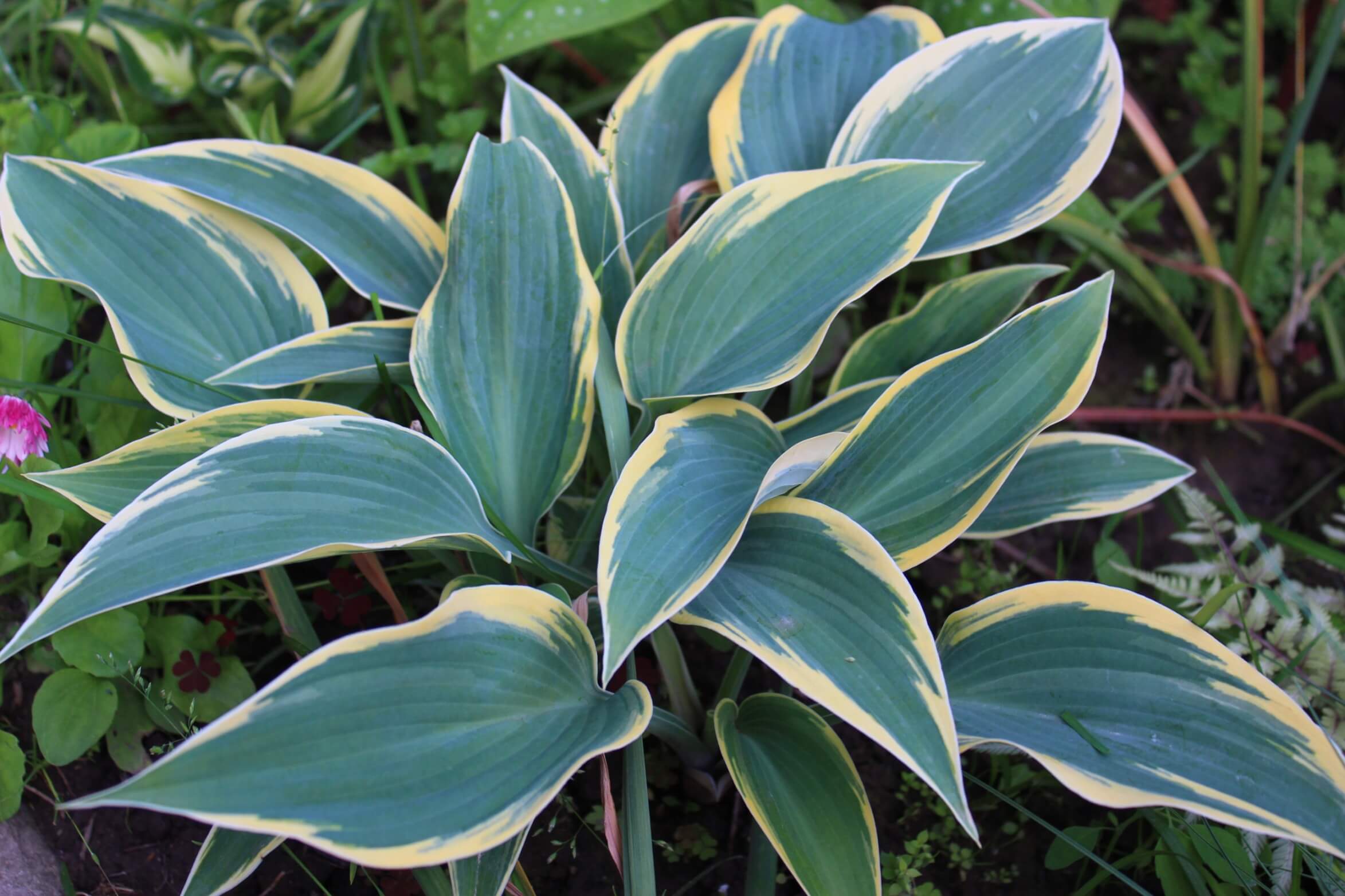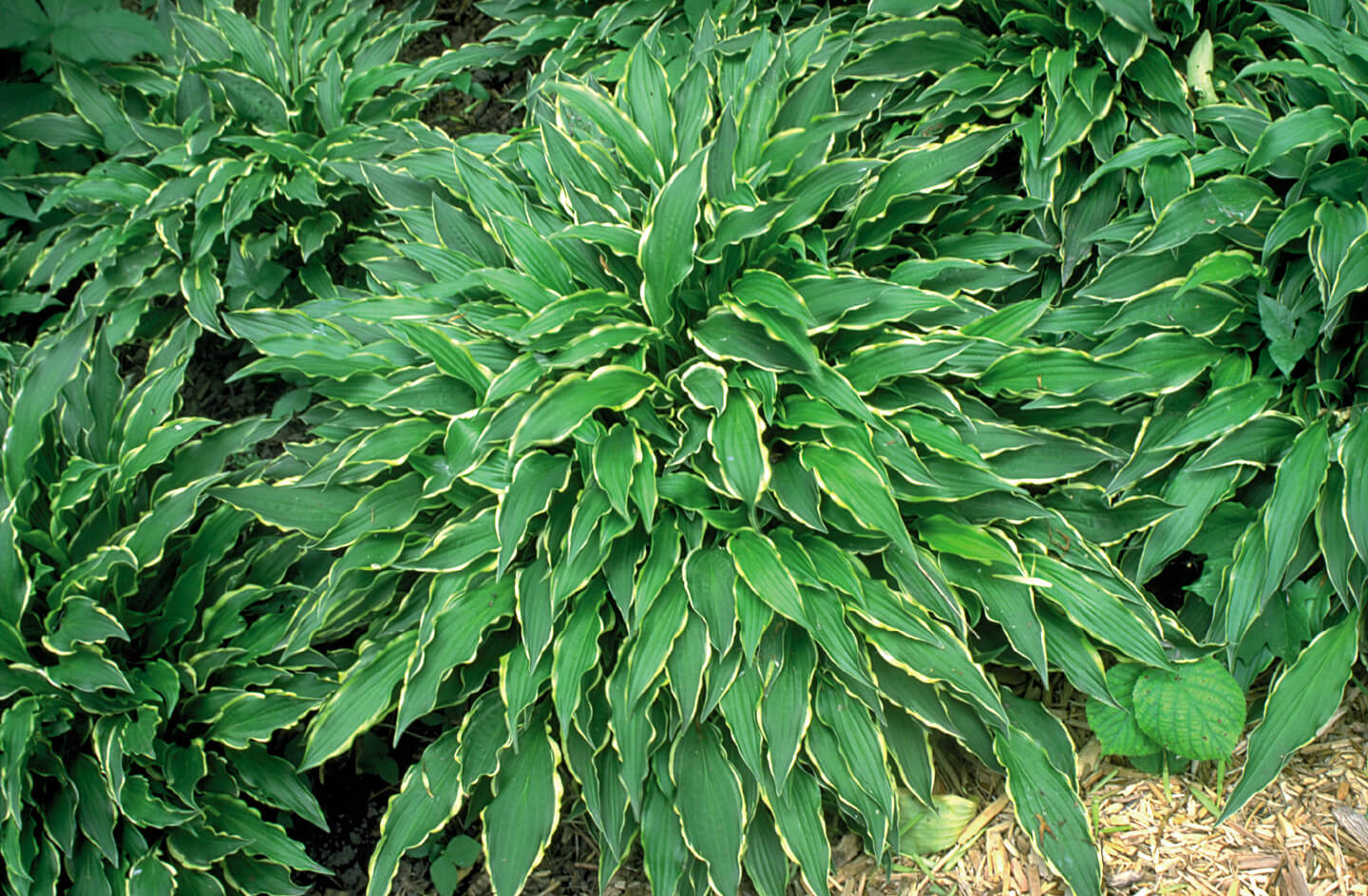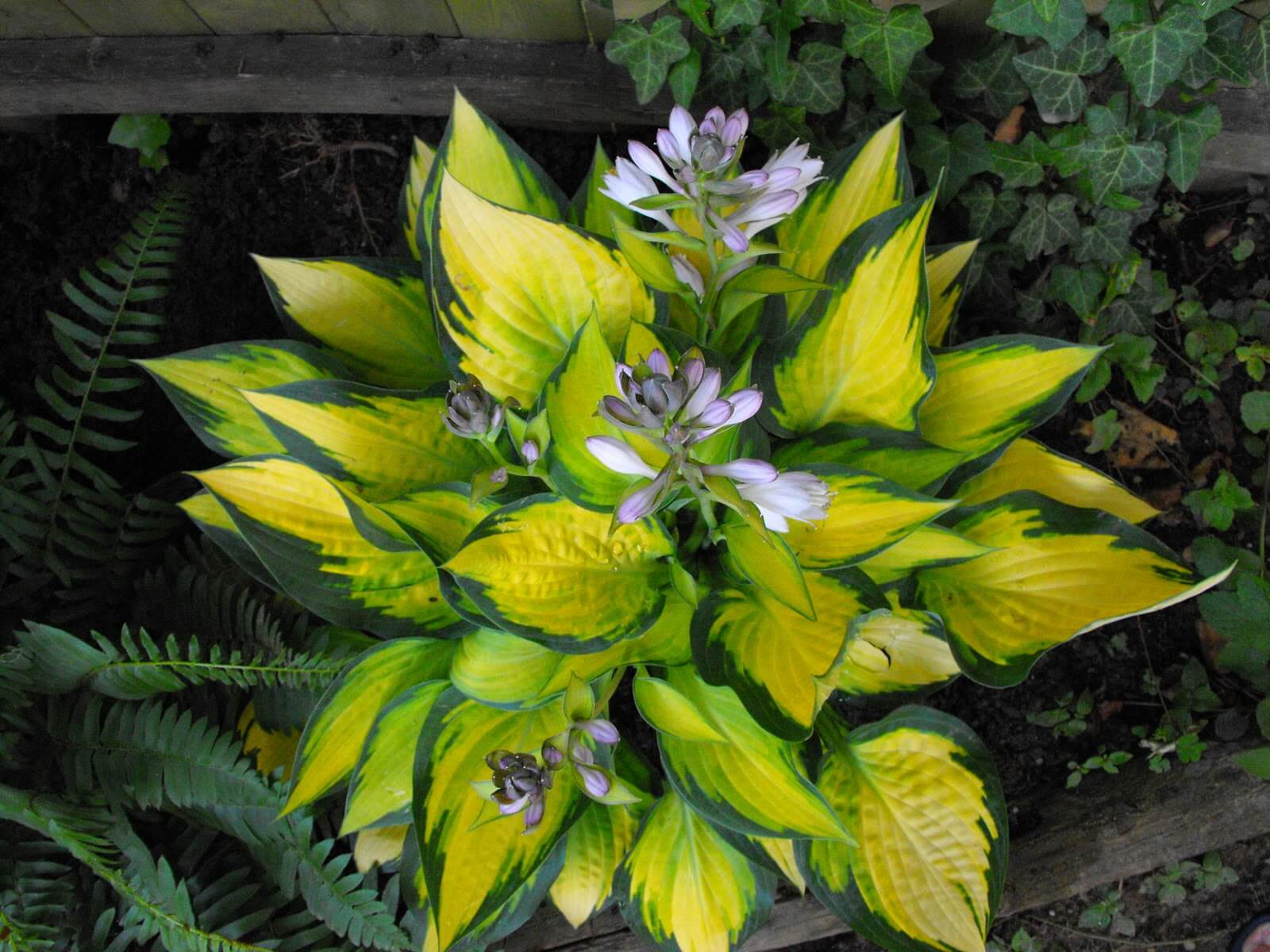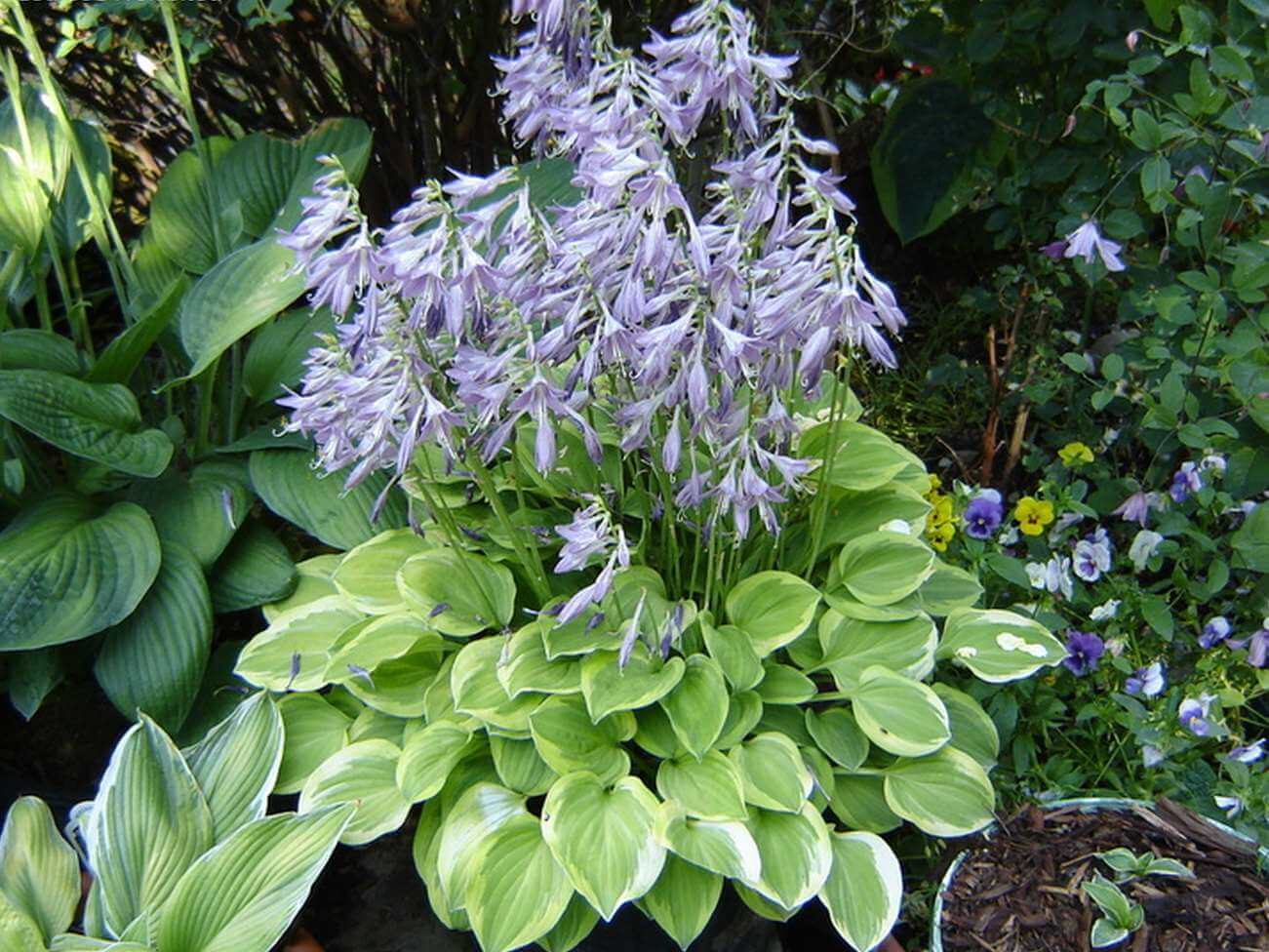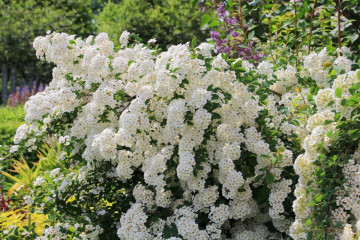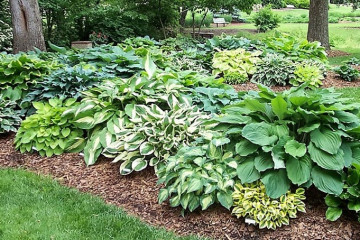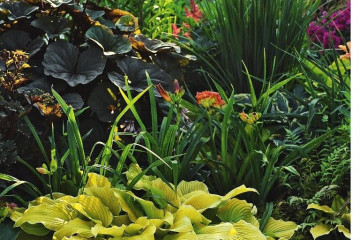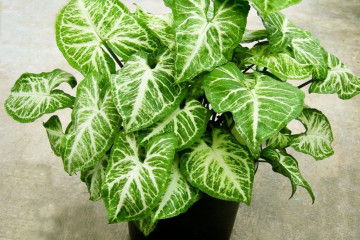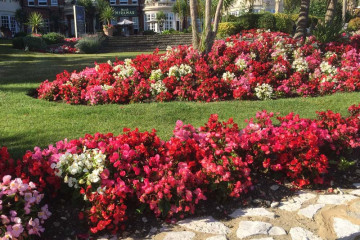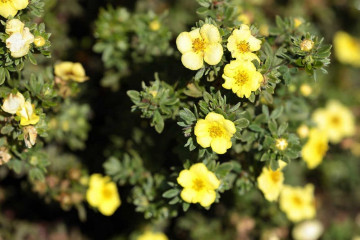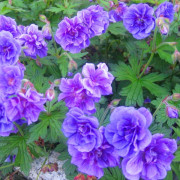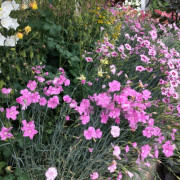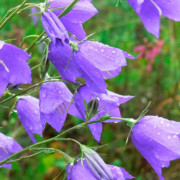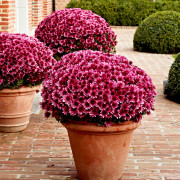Hosts - varieties and types
Content:
The hosta plant has a huge variety of species. According to official figures, 80 varieties, breeders continue to register new varieties. This beautiful perennial flower is characterized by exquisitely shaped, bright green leaves and spotted and striped prints. Hosta is one of the most unpretentious crops that do not require special care and do not have difficulties in planting.
general information
The culture received the first name of the genus "hosta" in honor of the Austrian botanist N. Host. Another name - funkia, was given to it by K. Sprengel in honor of the German pharmacist H. Funk.
Host varieties and species are also mentioned in sources about the journey of Marco Polo to China in the 13th century. Then he sent descriptions of two hosts: plantain and bloated. These two varieties were the first to reach Europe.
The culture is grouped into subgenera:
- Hosta. By how the host of this subspecies blooms, they determine which group it belongs to. Those plants, the flowers of which open in the afternoon - to plantaginea, and those subgenera that bloom during the day - to subgenus.
- Giboshi. Includes three groups and the largest number of species. The name comes from the Japanese name for one host.
- Bryocles. This is just one kind of culture.
In the mid-90s, Russian flower growers began to grow hosta everywhere. Then it was represented by species:
- Fortune,
- Curly,
- Wavy, it refers to the host Albopicta.
- Siebold was rarely seen.
Varieties and types
Blue
Every florist dreams of a blue hosta growing in his garden. It looks very unusual: heart-shaped, rather voluminous leaves with a blue-green color are covered with a waxy bloom. If you rub a sheet of a leaf, it turns out that it is bright green. The plaque just makes it bluish. After exposure to sunlight, it becomes less noticeable.
Flowering begins in June and lasts until October. During this period, the host is the queen of the site. Inflorescences in the form of bells are collected in a brush, shades: lilac, white or lilac. After flowering, the peduncles are removed.
The most popular types of this variety:
- Miniatures: Baby Bunting, Blue Mammos Eyers,
- Mediums: Abiqua Drinking Guard, Blue Shadows,
- Large: Love Pat, Francis Williams, Big Daddy,
- Giant: Blue Angel, Blue Bowl
Golden Meadows
Hosta Golden Meadows is a representative of the Asparagus. Very much in demand in the garden. In composition with other flowers, it easily adjusts, attracting eyes with its leaves. Lives for about 25 years, which is long enough for an ornamental plant. Was bred by the originator "Van Elderen" and initially grew in Asia.
Specifications:
- Dense and tough foliage, wavy at the edges.
- Blue-green color of leaves with a yellowish core.
- By the end of summer, the core turns green, during the summer it changes color from yellow to cream.
- The shape is rounded, 23 * 15 cm.
- The plant reaches a height of 60 cm.
- It prefers to grow in partial shade in order to avoid the scorching rays of the sun and the burnout of the core.
- Blooms in July.
- It does not hide for the winter.
Liberty
Hosta Liberty is growing very well. It can grow from a seedling into a mature shrub in a period of 5-6 years. After wintering, the leaves are covered with a yellow border, during the summer it brightens.
Liberty is very easy to care for, practically does not get sick, is not capricious. It retains its decorative effect until late autumn.
Pros:
- Medium-sized dense sheet,
- Memorable spectacular colors,
- It can also grow in sunny areas.
White
The most popular type of white hosta is White Feather feathers. Initially, the foliage is of a cream print, but gradually turns green by the end of flowering.
This is a short plant - up to 20 cm in height. The shade of the flowers is lavender. The main value of this variety is considered to be decorative white foliage, which looks very bright in landscape design.
Siebold
The hosts of Siebold consider Japan to be the homeland.
Specifications:
- Egg-shaped foliage, bloom on it is gray, waxy.
- Corrugated sheet fabric, dense texture,
- Lavender flowers.
- Reproduction takes place by seeds or by dividing the bush.
- Planting site - partial shade, moist soil.
- Top dressing is carried out with nitrogen fertilizers in the spring, during flowering - at will, with mineral dressing.
The most popular types of Siebold:
- Elegance;
Picture 6 Siebold Elegance
- "Paul s'Glory No."
Halcyon
In hosta Halcyon, the foliage is also covered with a bloom, which is distinguished by a silvery tint. The plaque is indelible, therefore it protects the leaves from the effects of heavy rain or stinging rays, and helps to preserve valuable moisture inside.
Halcyon was grown in the gardens of Japan and China. It was brought to Russia at the end of the last century.
Host features:
- Frost resistant,
- Systematic watering, once every 4 days, water so that the soil is saturated to a depth of at least 50 cm.
- Reproduction is done by cuttings or dividing the bush.
- It grows slowly, but lives for a long time.
Big Daddy
Hosta Big Daddy has a large, powerful leaf texture. Shrub height - up to 65 cm. This is one of the best species of blue host. Loves the shade, during flowering is covered with white flowers, the height of the peduncle is up to 100 cm.
Big Daddy will look very good by the ponds, among the stones. Small-bulbous plants can be planted around it.
June
Hosta June is especially popular, she always takes leading positions in the ratings.
The foliage is dense, variegated and has a blue edging. The core is light in early spring, after which it gradually turns into chartreuse. The leaf is ovoid.
Feature - preservation of decorativeness throughout the season, pests (slugs) do not cause much damage.
Brim Cap
For Brim Cap hosts, fertile soil is required, with constant moisture and the presence of humus. Brim Cap is recommended for flower gardens.
Spectacular dark green and creamy leaves at the edges stand out from all the shrubs in the garden. The height of the Brim Cap can reach 45 cm. Flowering begins in July and lasts until early October. The color of the buds is lavender.
It is better to plant in partial shade, since the delicate foliage does not tolerate the burning sunlight.
Gold Standard
Hosta Gold Standard belongs to the types common in Russia. It was bred in 1976 in Michigan (USA). The cultivar Fortune was taken as a basis, therefore the full name of the species is the host Fortune Gold Standard. Differs in versatility: it can be planted next to trees, alpine slides, to decorate borders and on the territory of reservoirs.
Specifications:
- Leaf shape is ovoid,
- The flowers are lilac, there can be several peduncles, up to 1 meter in height,
- At the end of flowering, seed pods appear,
- The foliage is pale green with a dark border around the edges.
- The height of an adult shrub is up to 70 cm, the diameter is 120 cm.
Wide Brim
The hosts of Wide Brim have their own history of origin. In 1979, the Aden company introduced a new crop variety. The result is a dome-shaped ornamental deciduous plant.
The foliage is distinguished by its relief, white border and light green color. The drop-down rosette reaches a height of 50 cm.
The flowers have a delicate lavender color and a pleasant aroma. One-sided inflorescences are collected in a brush. The peduncle is located on a high stalk, the buds bloom in July and bloom until the end of September.
Features:
- Loves moisture, so the soil should always be well moistened. Surface watering is not for Wide Brim, especially during the budding season.
- It is necessary to plant in groups of 3 to 8 pieces. Better - 3-5 pcs. per m2.
- Before planting, the soil is fertilized, all weeds are removed, good loosening and moistening are performed.
First Frost
First Frost hosts have yellow edges on the foliage, which turn white by the beginning of autumn. The core also transforms from blue into bright green by the autumn period. The leaves shimmer beautifully from yellow to silvery-white in the sun.
Awards:
- In 2010, First Frost was named Host of the Year.
- From 2005 to 2015, she was one of the ten best hosts among florists.
According to experts and amateurs, Fest Frost amazes with a combination of blue-green and yellow. At the same time, the shade changes over the entire period of the summer season.
Specifications:
- Medium shrub, up to 25 cm in height, 70-75 cm in width, fountain-like shape.
- In the morning, the presence of sunlight is allowed, after - partial shade.
- Variation - along the edge of the leaf.
- The shape of the leaves is elliptical, dense texture.
- Does not tie seeds.
- The variety was officially registered in 2002.
Stiletto
Hosta Stiletto has narrow, wavy, strongly ribbed green leaves with a thin white border. Among all the host, this species stands out strongly for its shape and twisted leaf.
Reproduction and expansion are fast. Flowers are similar to bells, flowering begins in July.
A distinctive feature is that it is not afraid of the sun, so it can grow both in the shade and in the sun. In strong light, the leaves become even narrower. In partial shade, they straighten out.
Stiletto is an energetic, albeit miniature flower. Perfectly decorate rock gardens and borders. Often, full-fledged "carpets" of plants are created from it.
Of all the host Stiletto is the most recognizable, attractive due to the rippled foliage.
Orange Marmalade
Hostu Orange Marmalade is distinguished by the brightest print of the leaf, the shape of which is wide-oval, with a sharp tip. The core combines light orange and yellow colors, along the edges - gray-green.
Features:
- Flowers - a light shade of lavender,
- The sheet is slightly compressed,
- There is a stroke pattern in the core,
- Height - up to 40 cm, diameter - up to one meter.
- You should not shelter for the winter,
- Lighting - partial shade.
Golden Tiara
Hosta Golden Tiara is classified as a classic host. It is very common among flower growers.
In the spring, when active growth begins, the foliage unfolds immediately fully colored. The start of development begins early - almost after the snow melts.
Specifications:
- Average density of the leaf.
- Form - wavy, corrugated, broadly oval.
- The base is cordate.
- The border is yellow, but brightens by autumn.
- Abundant flowering, dense inflorescences on thin peduncles.
- The flowers are lilac, they become brighter in the sun.
- The flowering period is July-August, subsequently seed boxes appear.
- Most often, the Golden Tiara is attacked by slugs and can cause severe damage to the bush.
- Likes to grow in the presence of partial sun, in partial shade or even in the shade. In strong sunlight, it can fade and lose its decorative effect.
- It can be used as a ground cover and grown in a container.
Thanks to the variety of hosta varieties, shades and patterns of leaves and its unpretentiousness, you can create extraordinary plant groups from crops belonging to different families in the garden yourself. Tall, large or giant varieties will transform a tropical garden, miniature ones will decorate terraces and small flower beds. Bonus - different times when the buds begin to open and bloom. When some plants finish flowering, others will just start to activate. Thus, the suburban area will always be bright and colorful.
Video
